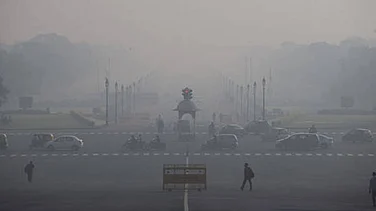As India approaches the 77th anniversary of Independence Day, tiranga has taken over the streets. But while we celebrate the years of freedom struggle of our forefathers who sacrificed their lives to fight the British Raj, a question comes to mind: who is free?
What does freedom mean to the Dalits, Adivasis, and religious minorities? What does it mean to LGBTQ people still fighting for equality? Amid the many freedom struggle stories, countless more stories go unheard. Outlook has always raised issues of the marginalised in its Freedom Issue.
In the upcoming issue of Outlook, we are talking about what we want freedom from and what we need freedom from in this country even after so many years of independence. Rakhi Bose of Outlook writes “Linguistic and cultural heterogeneity was at the heart of the freedom movement and formed the basis for the creation of states in India. As many as 1,652 “mother tongues” were recorded in 1961. Just a decade later, however, in the aftermath of the 1971 Bangladesh Liberation War, the census that year recorded just 109 languages after the government decided to only accept languages with 10,000 or more speakers. While UNESCO lists 197 Indian languages as endangered today, Dharwad-based linguist G N Devy, who undertook the laborious task of surveying over 780 languages for the People’s Linguistic Survey of India, notes that as many as 600 of the “mother tongues” mentioned in Census 2011 are “dying” or in various stages of endangerment.”
Whereas, G.N Saibaba writes, “Human nature ordains that one cannot live without freedom. I wonder how other beings perceive unfreedom; we know that indeed animals loathe fenced enclosures, birds hate cages and domesticated pets scorn the air-conditioned heavens. I do know that we humans have a colourful way of imaging the freedom we seek for ourselves, carried from aeons ago, beyond the Magna Carta (1215) that curtailed arbitrary ruling power to say ‘rule of law’ and ‘equality for all’.”
In 2023, for its Independence issue, Outlook delved into how even after so many years of independence the end of casteism seems far away. In an article titled ‘How About A Museum Of Untouchability To Display Caste Oppression?”, YS Alone wrote “There is a general perception that only the past is museumised and not the present practices. These strange ideas and attitudes take away focus from many problematic social issues in our society. It is ironic that even after India became a republic, the Indian public at large gets politicised only in terms of casting votes. This hardly helps our society emerge as a just society representing modern democracy”.
In its 2022 Independence Day issue, Outlook has talked about caste and how historical oppression continues in the community on a societal basis. In an article titled, ‘Tracing the Movement’, Nicolas Jaoul wrote about how Dalit assertion in the name of Ambedkar is “threatened of decay and cooption into the symbolic order of caste”






.jpg?w=801&auto=format%2Ccompress&fit=max&format=webp&dpr=1.0)









